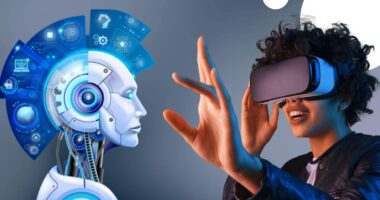Importance of Snakes in Indian Mythology: Snakes have played an important role in Indian mythology for centuries. They have been revered as symbols of wisdom, power, and immortality, and have been featured in many religious texts and stories. Today we will delve into some of the important events and stories that have made snakes so significant in Hinduism.
Amrit Manthan or Churning of the Ocean of Milk
The “Amrit Manthan” or “Churning of the Ocean of Milk” is a popular story in Hindu mythology. It tells the story of how the gods and demons came together to churn the ocean of milk in order to produce the elixir of immortality, also known as Amrit. The gods and demons used the serpent king Vasuki as the churning rope and the mountain Mandara as the churning rod. The story is full of symbolism and is said to represent the struggle between good and evil, the triumph of good over evil, and the importance of cooperation and unity.

During the churning, many things emerged from the ocean, including the elixir of immortality, but also poisons, and other dangerous creatures. The god Vishnu intervened and took the form of a beautiful woman named Mohini to distract the demons and give the elixir to the gods. The story of the Amrit Manthan is significant in Hindu mythology, as it is said to represent the creation of the world, the emergence of life, and the ultimate triumph of good over evil. It is also seen as a reminder of the importance of cooperation and unity in achieving a common goal.
Adishesha (Sheshanaga)

Sesha, also known as Shesha or Sesha, is a serpent god in Hindu mythology. He is considered to be the king of all snakes and is often depicted as having multiple heads and coils. He is also known as “Adishesha” which means the first serpent. He is considered to be the chief of Nagas, the serpent demigods. Sesha is said to be the eternal companion of Lord Vishnu, and is believed to support him by serving as his couch and his crown. He is also said to be the creator and destroyer of the universe, and is often depicted holding the world in his coils. According to some Hindu texts, Sesha is also the brother of Vasuki, another prominent serpent god in Hindu mythology.
Sesha is also known as the protector of the universe, and is believed to keep the balance of the universe by supporting the cosmic order. He is also considered to be a symbol of time and eternity and is depicted in many Hindu temples and shrines. In Hinduism, Sesha is also considered as one of the eight primary attendants of Lord Vishnu and his consort, the goddess Lakshmi, is believed to reside on his coils. Worshiping Sesha is considered to be auspicious and is said to bring good luck, wealth and prosperity.
The Association of Lord Shiva and Vasuki

According to Hindu mythology, Vasuki is considered to be the ruler of the snakes and is depicted as being worn by Lord Shiva. He is considered to be a devotee of Lord Shiva and is also associated with wealth and good luck. The symbolism surrounding Vasuki is well known in Hinduism, with his three coils representing the three states of time and reality, and he is worshiped on Nag Panchami. Lord Shiva is often portrayed with snakes, and is seen as all-powerful, invincible, and fearless as the master of snakes.
Lord Shiva is also considered a benevolent deity who will do anything to protect his devotees. There are two important interpretations of the Snake King Vasuki, around Lord Shiva’s neck. The first is the representation of Kundalini energy or spiritual energy found in humans, and the second is the representation of the past, present and future, with the three coils of the snake indicating that the yogi is free from the bonds of time and death.
Snake Wordship and Significance of Snakes in Hinduism

In Hinduism, snakes are revered and considered sacred animals. They are associated with many deities, including Lord Vishnu, Lord Shiva, and other Gods. The serpent king, Vasuki, is considered to be a great devotee of Lord Shiva and is depicted as being worn by Lord Shiva as a sacred thread. In Hindu mythology, snakes are also associated with the god of wealth, Kubera, and are believed to bring good luck and prosperity. They are also seen as symbols of fertility, rebirth, and immortality. The practice of using snakes in healing rituals, known as “sarpa shastra”, is also a common practice in Hinduism.
Also Read: Reasons Behind The Things Lord Shiva Carries





